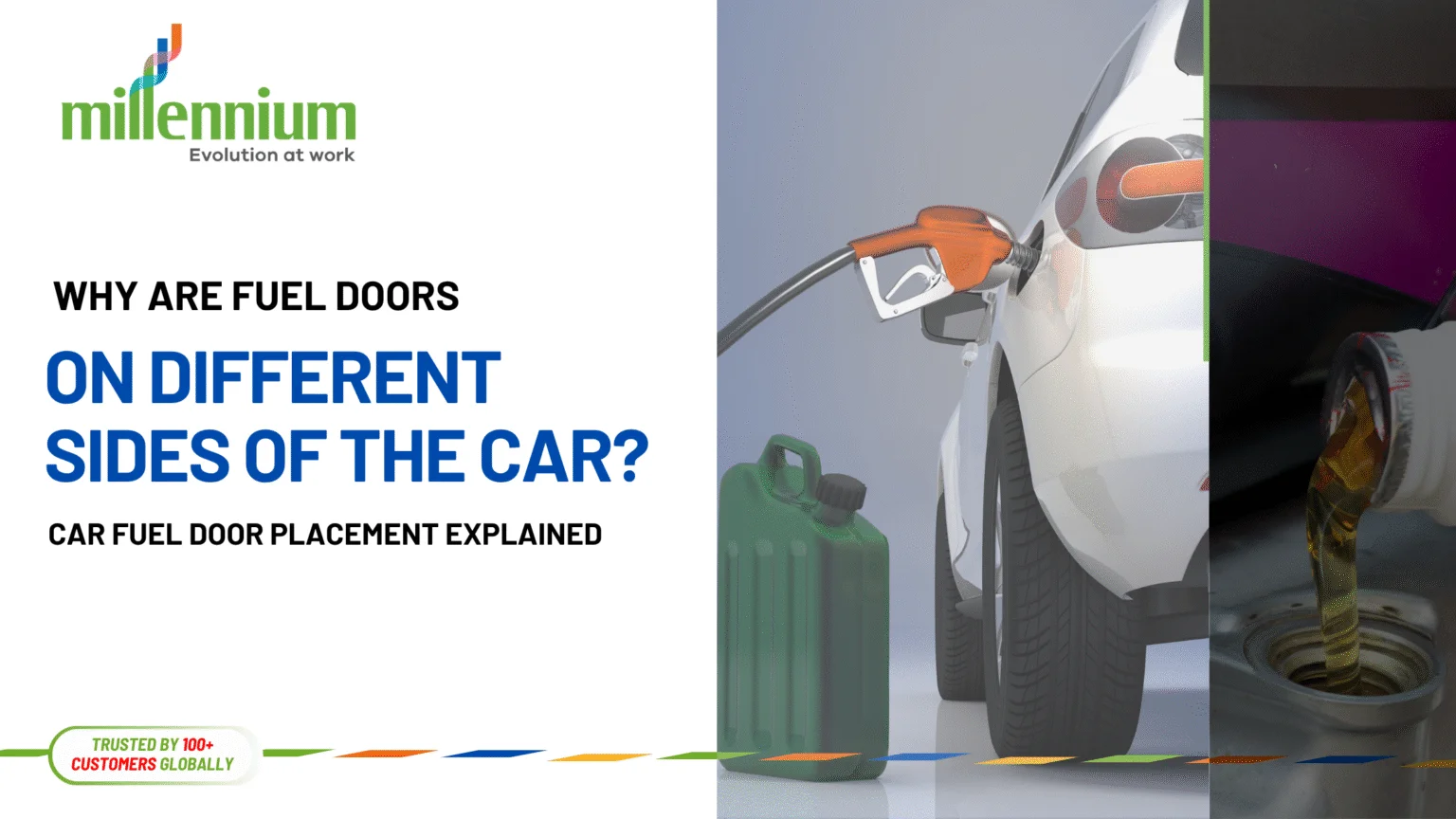Why Are Fuel Doors on Different Sides of the Car? | Car Fuel Door Placement Explained

The History Behind Fuel Door Placement
The location of fuel doors on vehicles has long intrigued drivers, and while it may seem like an arbitrary decision, it’s rooted in decades of automotive design evolution. Early automobiles didn’t have enclosed fuel doors at all. In fact, fuel caps were often placed on the rear or even inside the engine bay. As cars became more sophisticated and safety standards increased, manufacturers began enclosing fuel tanks and designing accessible but protected locations for refueling.
Over time, rear-mounted fuel fillers—popular in mid-20th century American cars—were phased out due to crash safety concerns. Rear-end collisions could compromise fuel tanks placed at the back, increasing the risk of fire. This led engineers to favor side-mounted fuel doors, which are less vulnerable and easier to shield during impacts.
However, as manufacturers shifted away from the rear, there was no industry-wide consensus on which side to place the filler. Unlike regulations for lighting or airbags, no global rule governs fuel door placement. This opened the door (literally) for a wide range of design choices that we still see today.
Why Do Some Cars Have Fuel Doors on the Left and Others on the Right?
You may have noticed that some vehicles, like BMWs and Subarus, have fuel doors on the right, while others like Fords and Hondas often place them on the left. Why is there no standard? The answer lies in a mix of engineering priorities, regional preferences, safety thinking, and manufacturing logistics.
1. Engineering Constraints
Fuel tank placement is influenced by underbody design, exhaust routing, suspension configuration, and crash protection zones. Sometimes, it’s simply more efficient to position the filler neck on one side to avoid interference with the exhaust or to make room for other mechanical systems.
2. Driving-Side Norms
In countries where drivers sit on the left (like the U.S.), placing the fuel door on the left side means easier access—no need to walk around the car. But in countries with right-hand drive vehicles (like the UK or Japan), the driver-side fuel door would be on the right.
However, some manufacturers maintain a consistent design globally to reduce manufacturing complexity. For example, a vehicle designed for Japan may retain its right-side fuel door even when sold in the U.S. This helps standardize production and reduce part variations.
3. Safety Considerations
Some automakers argue that placing the fuel doors on the passenger side is safer. In the event a driver runs out of fuel and pulls over on a busy highway, the passenger side is further from traffic. This allows the driver to refuel away from moving vehicles, reducing the risk of injury.
4. Fueling Station Efficiency
From a logistical standpoint, carmakers also consider gas station design. If all cars had fuel doors on the same side, queues would be longer and pump access would be less flexible. By varying placement, it allows more even distribution of cars at fueling stations—reducing congestion and wait times.
How Does Fuel Door Placement Affect Drivers?
While the side of your fuel door may seem trivial day-to-day, it has some subtle effects on your driving experience.
1. Refueling Habits
Forgetting which side your fuel door is on is a common frustration, especially when driving a new car or rental. Fortunately, most modern cars include a small arrow on the fuel gauge pointing to the correct side. Still, when rushing into a gas station, choosing the wrong side wastes time and often requires awkward repositioning.
2. Parking and Fuel Access
In urban settings or tight parking spots, the side of your fuel door can determine whether you can refuel easily or not at all. A curb or wall on the wrong side might block access, forcing drivers to circle the block or wait for a pump on the correct side.
3. Fleet and Multi-Car Households
In garages or families with multiple vehicles, mismatched fuel door sides can lead to confusion or inefficiencies. Some fleet operators even choose vehicles with consistent fuel door placement to speed up routine refueling and reduce training needs for drivers.
Conclusion
Fuel door placement is a small but surprisingly complex part of vehicle design. It’s shaped by a combination of technical layout, safety preferences, regional norms, and production strategy. While there’s no universal “correct” side, automakers balance various factors to determine the most practical location for each model.
So whether your car’s fuel door is on the left or right, know that it wasn’t placed there by accident. The next time you’re at the pump, you’ll have a deeper appreciation for the thought and engineering that went into even the simplest features of your vehicle.






One thought on “Why Are Fuel Doors on Different Sides of the Car? | Car Fuel Door Placement Explained”